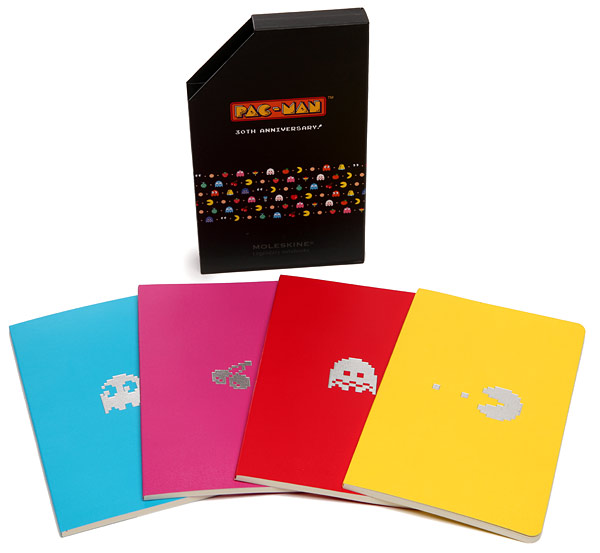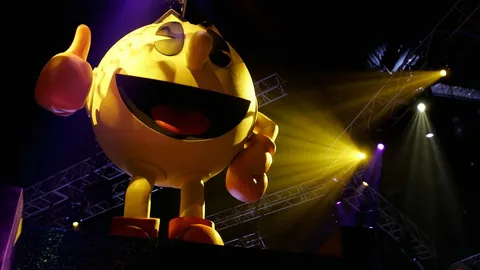When Pac-Man first appeared in arcades in 1980, few could have predicted the enormous legacy it would leave behind. Marking its 30th anniversary in 2
When Pac-Man first appeared in arcades in 1980, few could have predicted the enormous legacy it would leave behind. Marking its 30th anniversary in 2010, Pac-Man stood not only as a beloved video game but also as a groundbreaking cultural icon that helped redefine what video games could be. This milestone was a perfect moment to reflect on how Pac-Man transformed gaming, shaped popular culture, and continues to inspire new generations.
The Groundbreaking Concept Behind Pac-Man
Pac-Man was designed by Toru Iwatani, a young game designer at Namco, who wanted to create a game that would appeal to everyone—not just the typical arcade audience dominated by shooters and sports games. His inspiration was simple yet brilliant: the game’s main character resembled a pizza missing a slice, resulting in the iconic yellow circle with a mouth.
Unlike other arcade games focused on shooting or high-speed action, Pac-Man introduced a maze-chase format, encouraging players to navigate through intricate mazes, eat pellets, and avoid colorful ghosts. Each ghost had distinct AI behavior, creating an early example of complex enemy programming that challenged players to strategize rather than just react quickly.
This combination of approachable gameplay, strategic depth, and a non-violent environment made Pac-Man appealing to a broader, more diverse audience, including women and families who had been underrepresented in the gaming community.
The Explosion of Popularity: A Cultural Phenomenon
Pac-Man’s release sparked an unprecedented wave of popularity. It quickly became one of the highest-grossing arcade games in history and helped drive the golden age of arcade gaming. The character became a household name and transcended the confines of the arcade.
More about: pacman 30th anniversary
From Screen to Store Shelves
Pac-Man was among the first video game characters to inspire extensive merchandising. From lunchboxes and T-shirts to toys and even breakfast cereals, Pac-Man was everywhere. This merchandising success was instrumental in making video game characters a significant part of pop culture.
Expanding the Reach: Media and Music
Pac-Man’s influence extended beyond games and merchandise. The character starred in an animated TV series, was featured in comic books, and even inspired the hit song “Pac-Man Fever,” which climbed music charts in the early 1980s. These media ventures helped cement Pac-Man’s place in entertainment history.
Language and Iconography
The ghosts—Inky, Blinky, Pinky, and Clyde—and Pac-Man himself became symbols recognized worldwide. Their distinctive colors, shapes, and behaviors entered popular culture, influencing everything from graphic design to slang.

The 30th Anniversary: Honoring a Legendary Legacy
In 2010, Namco celebrated Pac-Man’s 30th anniversary with a wave of special events, releases, and collaborations that paid tribute to the game’s history while pushing it into the modern era.
Special Editions and Remakes
To honor the anniversary, Namco released enhanced versions of Pac-Man on many platforms, including smartphones, consoles, and PC. These editions featured updated graphics, new maze layouts, multiplayer modes, and leaderboards, combining nostalgia with contemporary gaming trends.
Community and Competitions
The anniversary spurred renewed interest in Pac-Man tournaments and community events worldwide. Arcades and gaming conventions hosted competitions that brought together casual and hardcore fans alike, showcasing the game’s enduring competitive appeal.
Partnerships and Merchandising
Namco collaborated with various brands to launch new Pac-Man merchandise, including apparel and collectibles. These products allowed longtime fans to celebrate their love for the game while introducing the character to new audiences.
How Pac-Man Changed the Game Industry Forever
Pac-Man’s impact on gaming cannot be overstated. It revolutionized game design in several key ways:
- Artificial Intelligence: The ghosts’ unique AI patterns represented one of the earliest uses of varied enemy behaviors, adding complexity and replayability.
- Game Design: The game’s simple yet deep mechanics influenced countless future games, emphasizing player strategy and pattern recognition.
- Demographic Expansion: By attracting women and casual players, Pac-Man broadened the gaming market, encouraging developers to create games for diverse audiences.
- Branding and Marketing: Pac-Man proved that video games could generate strong brand identities and merchandising opportunities.
The Lasting Appeal of Pac-Man
Even after 30 years, Pac-Man’s charm remains undiminished. Its simple gameplay and memorable characters continue to captivate new generations, bridging the gap between retro gaming enthusiasts and younger players discovering it for the first time.
Modern Iterations and Spin-Offs
The franchise has evolved with new titles such as Pac-Man Championship Edition, which introduced dynamic mazes and fast-paced gameplay, and Pac-Man World, an action-platformer that expanded the character’s universe. These modern games keep the franchise fresh while respecting its origins.
Cultural Symbolism
Pac-Man represents more than just a game; it is a symbol of early video game history, innovation, and fun. It appears frequently in pop culture, from movies and TV shows to advertising and art.
Education and Inspiration
Pac-Man’s design and AI have been studied and referenced in game development education, serving as a classic example of effective game mechanics and programming.
Looking Ahead: Pac-Man in the Next Decades
The future of Pac-Man looks bright. With advancements in virtual and augmented reality, mobile gaming, and cloud streaming, the franchise is poised to reach even wider audiences in immersive new ways. Moreover, the character’s simple, iconic design makes it an ideal candidate for adaptation across media formats.
The 30th anniversary was not just a celebration but a stepping stone, reminding us how a simple idea can grow into a global phenomenon that continues to inspire creativity and joy.
Frequently Asked Questions (FAQs) about Pac-Man 30th Anniversary
Q1: When was Pac-Man originally released?
A1: Pac-Man was first released in 1980 by Namco.
Q2: Who designed Pac-Man?
A2: Toru Iwatani designed Pac-Man, aiming to create a game for a broader audience.
Q3: What made Pac-Man different from other arcade games at the time?
A3: It featured non-violent maze gameplay with AI-driven enemies and appealed to diverse audiences beyond traditional gamers.
Q4: How was Pac-Man’s 30th anniversary celebrated?
A4: Through special game editions, tournaments, merchandise, and global events in 2010.
Q5: What is unique about the ghosts in Pac-Man?
A5: Each ghost has distinct AI behavior patterns, making the game challenging and strategic.
Q6: Are there modern versions of Pac-Man?
A6: Yes, there are many including Pac-Man Championship Edition and Pac-Man World.
Q7: How did Pac-Man impact popular culture?
A7: Pac-Man inspired TV shows, music, merchandise, and remains an enduring pop culture icon.
Q8: Can Pac-Man be played on mobile devices?
A8: Yes, Pac-Man is available on iOS, Android, and other mobile platforms.
Q9: What lessons did game developers learn from Pac-Man?
A9: The importance of accessible gameplay, AI variety, and broad audience appeal.
Q10: Why is Pac-Man still popular after 30 years?
A10: Its timeless gameplay, cultural significance, and ongoing franchise updates keep it relevant.
Fore More Info: quickcashhub

COMMENTS